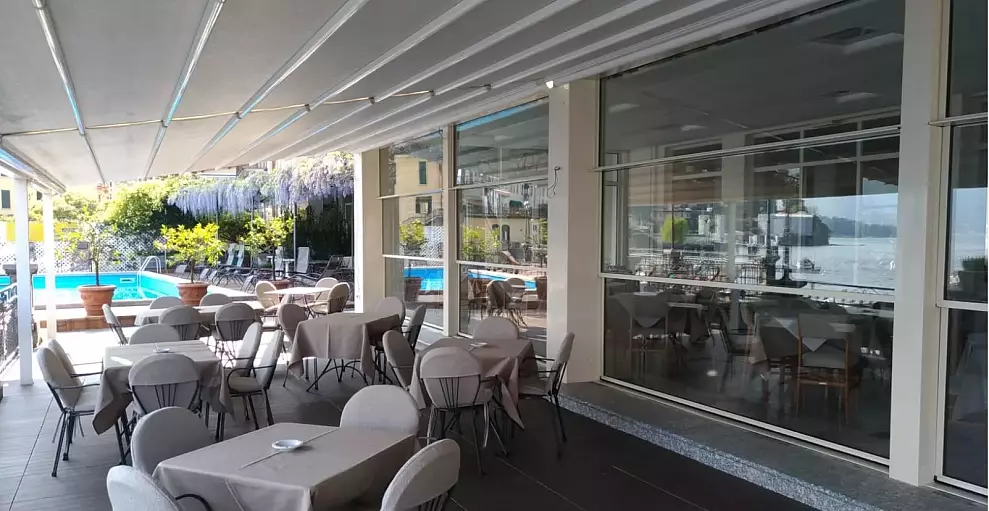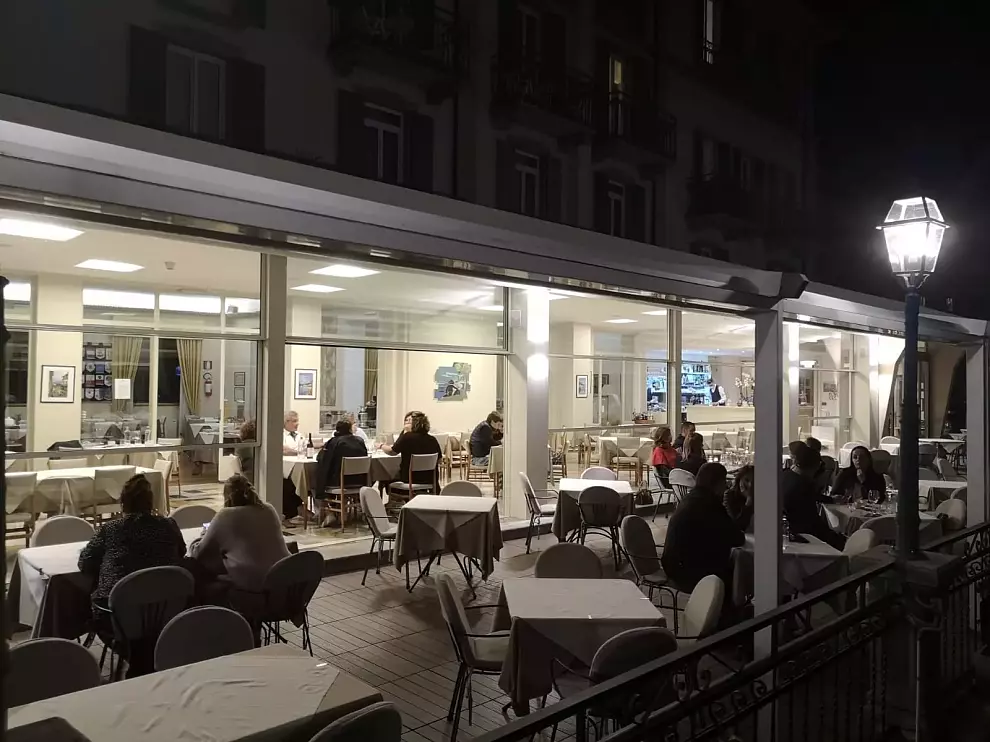Guillotine Door
What is guillotine door system?
Contemporary architecture offers brand new ways and products to centuries old architectural elements. Getting more widespread over time, people start to wonder what the guillotine door systems are and start searching for the information regarding these systems.
A guillotine door system is a modern-day architectural solution system for wall openings. Different than the traditional doors the guillotine door systems embody a vertical action. Traditional doors open and close on the x axis. They are hinged on a vertical axis and the rotation action occurs on the horizontal plane. On the other hand, guillotine doors are not hinged. Guillotine doors are suspended on the top part of the wall opening and the slates are moved with a motorized pulley wheel system.

How does the guillotine doors work?
Generally, doors have similar opening sizes. A standard single door rotates towards one way, forward or backward. Sliding doors move towards the wall linage. Sliding folding doors move on the linage of the wall that it is mounted but also require space on the front side of the wall. In these cases, the while the door itself is clearing the passageway for circulation, they acquire new space from the room area. Guillotine action on the other hand folds or slides vertically and upwards. Therefore, it is stacked on the ceiling which is an area not used by the people circulating. This principle of working makes the guillotine doors the new architectural stars of the door types. The convenience for commercial spaces beats the dutch.

Why would you choose guillotine doors over other alternatives?
A door’s main function is to create passage from one enclosed space to another. Doors are the tools to create feasible circulation within buildings. A door closed keeps the noise out, ensures safety from strangers. In a house it provides privacy and comfort. It is because of a door someone can claim a space as their own. However, a closable passage does not always have to offer such rigid enclosures and privacy might not be needed in some cases. For instance, the passage from a living room to a garden. Or for a restaurant on a summer day… Imagine the outdoor patio and the indoor seating area.
Do we really need to divide some spaces in such static ways? Maybe sometimes. In winter for example, or on a windy day. In essence it is clear that, some spaces require more flexibility while functioning. What if a door could be in size of a wall? A complete wall, acting like a door; opening and closing a space. But it is not pivot or hinged. It simply appears as required or disappears with the guillotine action.
Function adaptability means a lot when it comes to commercial spaces. Some venues throw parties for customers or house weddings, small gatherings, big celebrations or on a regular basis, booked for romantic dinners for just 2-people and offers 2-people tables only. In short whether it is an hotel or a restaurant or a celebration venue; a commercial space should obtain the ability to adapt according to customer demands in order to survive the competitive market of today’s world. The guillotine door provides this opportunity for businesses.

